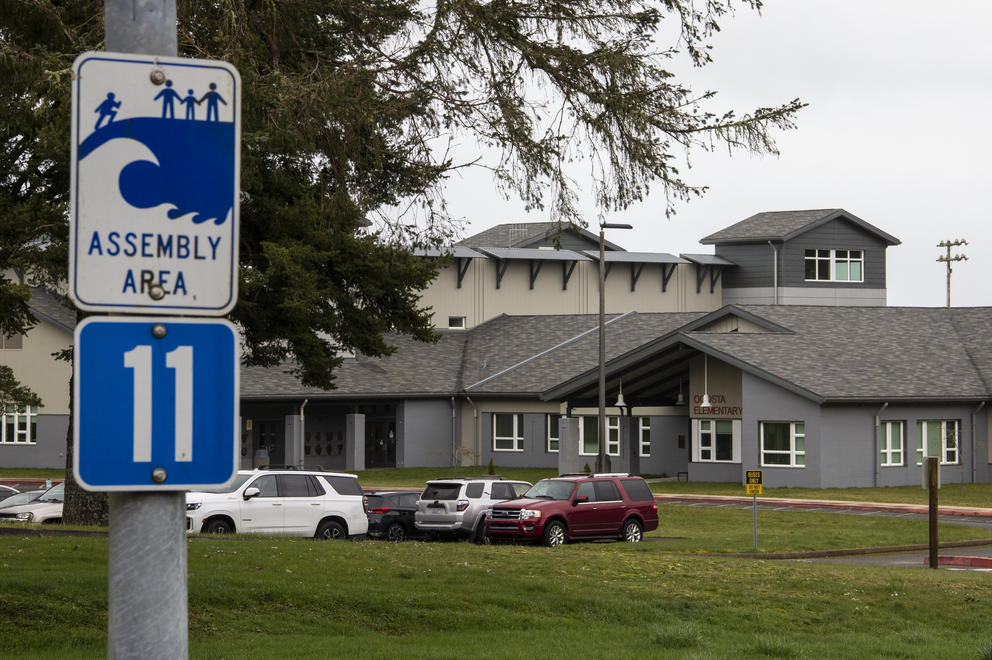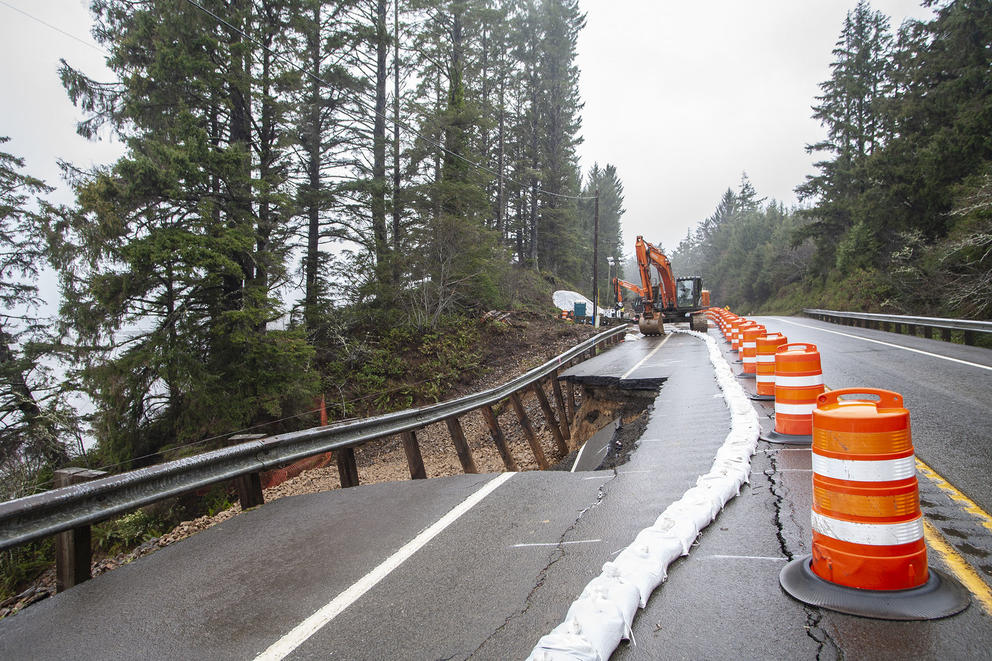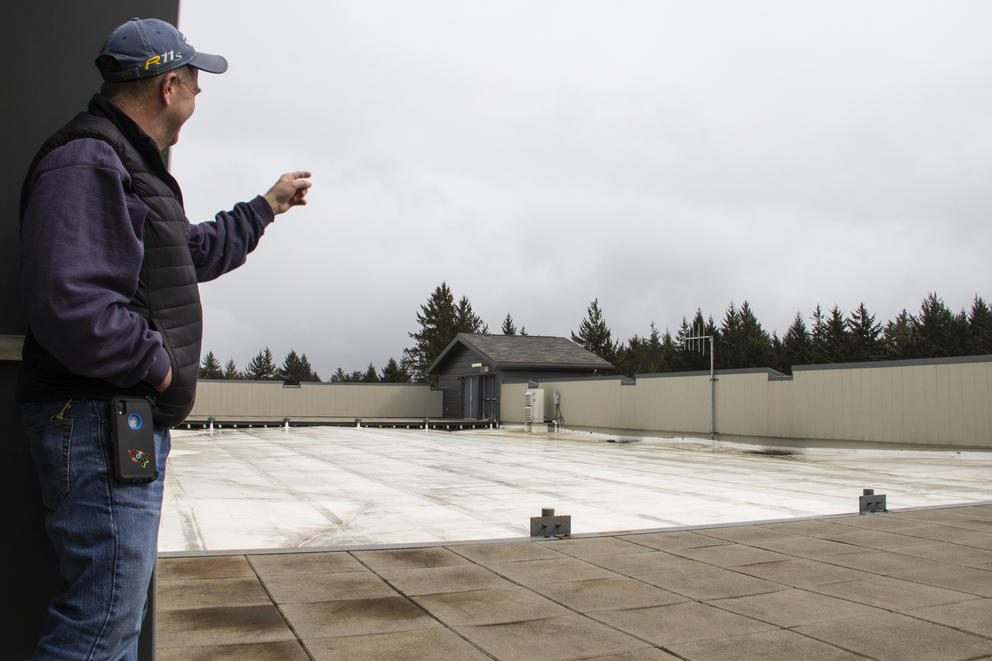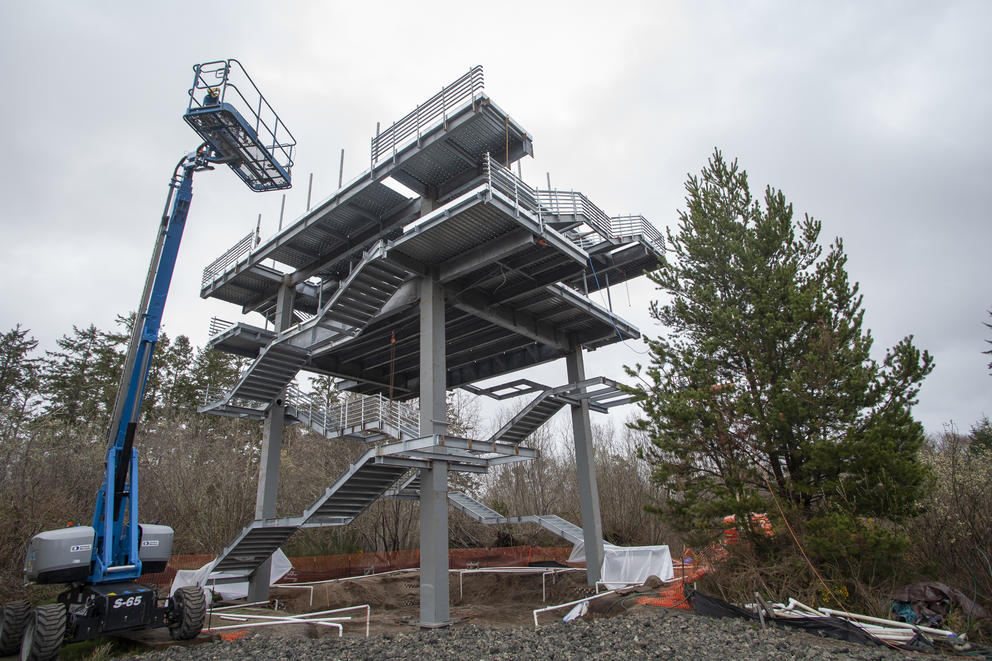A vast body of geological and historical evidence shows that the question is not whether it will happen, but when. No one can answer that yet, but another question is more accessible: whether those in the tsunami’s path will be able to get above its reach in the 10 to 20 minutes before it hits Washington’s outer coast.
All that may be easier to accept outside the acute tsunami danger zone. (Seattle will suffer devastating shaking in a major Cascadia quake, but the waves will take more than two hours to get here and are projected to rise just 7 feet on the downtown waterfront, less on other city shores.) For the oceanfront communities most exposed to it, however, the someday tsunami is a more complicated challenge.
Far from bringing people together in common cause, the threat has proved a source of dispute and division in some communities. Like two global crises, climate change and the pandemic, it has elicited responses ranging from urgent alarm and dogged determination to denial, resignation and, as the years of dire warnings roll on, disaster fatigue.
“There’s a lot of fatalism out there,” says Scott McDougall, Pacific County’s emergency management director, who labors each day to overcome such resistance.
As evidence, consider the successive fates of four school bond measures to fortify or relocate endangered coastal schools. In 2013 the Ocosta School District, which serves the sandspit town of Westport and environs, sought to replace its outdated elementary school. Two previous measures to rebuild it had failed, but this one included something different: A tsunami-resistant vertical evacuation structure, the first in North America. Its 10,000-square-foot reinforced roof, built atop a gym, could hold up to 2,000 people above the waves.
Thousands in the path of Japan’s 2011 Tōhoku tsunami survived by fleeing to such structures (although many also drowned on underbuilt towers swamped by higher-than-expected waves). Vertical evacuation was a main reason only about 19,000 people died in an earthquake and tsunami that displaced 450,000.
By contrast, some 32,000 of the 71,000 Washingtonians who live or work in the tsunami’s path couldn’t reach high ground within 15 minutes, according to estimates that state hazard officials say are likely low. That doesn’t include thousands of tourists who might also drown if a tsunami happens during summer.
The Ocosta district asked voters to take on $13.8 million in debt for the structure, with the state kicking in $2 million more. “We were very upfront about the cost and the tsunami risk,” says then-Superintendent Paula Akerlund, who led the campaign. The outcome surprised even her: 71% support.
Flash forward to February 2020, on the eve of the pandemic. Across Grays Harbor, in the coast’s largest city, the Aberdeen School District sought to replace its most endangered and dilapidated elementary school (vintage 1951). The Federal Emergency Management Agency kicked in $3 million to add an evacuation tower. The measure fell one vote short of the 60% supermajority required of school bonds, and the FEMA grant elapsed. “It was a heartbreaker,” says district Superintendent Alicia Henderson, especially because a middle school and two other elementaries, along with the city’s pancake-flat downtown and southern residential districts, also lie in the inundation zone, with no other refuges in the works.
West of Aberdeen and north of Westport, Ocean Shores may be the coast’s most vulnerable community, with more than 97% of residents and workers in the hazard zone. Two other big sandspits, Westport and the Long Beach Peninsula, are similarly exposed but have slivers of higher ground. Ocean Shores has just sand and canals (it was developed as a would-be Venice) to both channel waves and hinder escape. According to the Washington Geological Survey’s hazard mapping, it and nearby Ocean Beach will also suffer the deepest inundation in Grays Harbor County. (Inundation levels can vary greatly over short distances depending on both land and sea bottom topography.)
In February, the North Beach School District, which serves a coastal swath from Ocean Shores to the edge of the Quinault reservation, tried to pass a $110 million “Safety 4 Students” bond measure. It would replace one conspicuously crumbling, seismically defunct elementary with a new school on high ground and build evacuation towers at the district’s other elementary and middle/high school. The towers would contain needed classrooms, a gym and a community performance space. They’d be large enough to take in 900 neighbors when school was in session, 1,800 during off hours.
“I grew up around sales,” Andy Kelly, then the district’s superintendent, told me shortly after the vote. “I thought surely I could sell this.” He pushed a grim but, he thought, “compelling” argument: “If a tsunami hits, 800 children are going to die.”
Instead, the measure won just 40% of the vote. In retrospect, Kelly sees economic and demographic pitfalls in a town with a median age of 64 and a per capita income about two-thirds the state average: “Some people said it was just too expensive. They said the state should pay for it. Lots of older people say, ‘I’ve already paid to raise my kids.’ ” Others, he said, expressed more unsettling objections: “ ‘Why save anybody if you can’t save everybody?’ ‘You can save the kids, but their parents will die and we’ll have a bunch of orphans to take care of.’ ”
I asked if he thought the measure might have passed if he’d soft-pedaled tsunami safety and emphasized educational benefits. Kelly mused for a moment and said somberly, “It might have….”
That’s the tack taken when the Ocean Beach School District, serving communities along the 28-mile Long Beach Peninsula, offered its own bond package in late April. It would have consolidated two elementary feeder schools in the tsunami’s path into a single new building on high ground in Ilwaco at the peninsula’s base, where the middle and high schools already sit. Those schools would have received seismic makeovers and a new stadium.
School officials first considered building evacuation towers. But, as Superintendent Amy Hundley told me before the vote, relocation offered operational and educational benefits as well. They still emphasized tsunami danger in their pitch — until they got the sort of blowback Kelly heard at Ocean Shores. Residents of Ocean Park to the north, loath to lose their neighborhood school, organized against the bond measure. Publicly, however, they attacked the plan because of the tsunami protection it promised, on two grounds that might seem mutually exclusive: a tsunami isn’t a real threat, so nothing need be done; and it’s so overwhelming nothing can be done.
“It’s something that may happen, may not happen,” one leading opponent, Bonnie Lou Cozby, told me before the vote. Cozby is the president of the Ocean Park Area Chamber of Commerce. “If in fact this Cascadia Fault earthquake happens, the destruction would be beyond anything we can do. Basically, the coastline is going to be underwater.” Not to worry, though: “There’s lots of high ground just five to 10 minutes away.” As in many climate change debates, despair and complacency converge on a common conclusion: “I don’t see that there’s a good reason to do anything.”
In a letter to the local Chinook Observer, attorney Diane L. Gruber, another opposition leader, assured residents they needn’t fear, because tsunamis had killed only four people in the Northwest in the past 60 years (an Oregon family caught by a 10-foot wave from the 1964 Alaskan quake). In the next paragraph, however, Gruber forecast doom: “Not only would our beautiful peninsula be washed away, but so would all the school buildings on ‘the hill’ in Ilwaco.” Conclusion: do nothing.
The Washington Department of Natural Resources, the Geological Survey’s parent agency, unwittingly fueled these apocalyptic claims with a hyperbolic press release in January. Its subhead warned of “flooding depths of 60 to 100 feet along Pacific coast beaches and Olympic Peninsula,” and its text declared these depths “are expected to reach or exceed 60 feet” along most beaches.
In fact, 100 feet is an outlier predicted at just two points on the Geological Survey’s detailed tsunami hazard maps: the mouth of the Hoh River and Yellow Banks Beach west of Lake Ozette. Even 60-foot inundation may be relatively rare; 30- to 50-foot forecasts are typical along the coast.
“Our impetus for spotlighting those figures was to show how serious it can get,” Joe Smillie, ommunications director of the Department of Natural Resources, said when I asked about the news release. “I don’t know that it’s misleading per se.” The intent was “to point people to the information in the maps” — which tell a very different, more nuanced story.
That nuance was lost in the debate. “The low end of the flood depth range, 60 feet, would put all [school] buildings in Ilwaco — both existing and proposed — completely under water,” merchant Tom Downer, an opposition leader, declared in the Observer. In fact, even Ilwaco’s harbor, shielded by Cape Disappointment, would be only 10 feet underwater. The school campus lies 40 to 60 feet above it. (Downer, like Gruber, did not respond to requests for comment.)
Such misinformation, deliberate or inadvertent, seems to have hit home with voters. The Ocean Shores bond measure crashed with just 23% support.
Every community is complicated in its own way, and many other factors influenced that outcome, from complaints about official competence and credibility to neighborhood rivalries and resistance to abandoning schools that had already been renovated and seismically updated. Ocean Shores City Administrator Scott Andersen contends that although tsunami disputes “didn’t help” the bond measure, what killed it was “sticker shock.”
Nevertheless, the pattern of diminishing returns is striking. No one involved thinks that schools, with their fraught politics and onerous supermajority requirement, are ideal agencies to provide tsunami protection. Municipal governments have more tax sources and, notes Andersen, “a little easier time applying for grants,” and they don’t need supermajorities to issue bonds. Because governments serve everyone, the elderly and childless can’t grumble about having to pay for other “other people’s children.”
But the coastal towns’ efforts at tsunami protection have been slow and fitful, leaving the schools to try to fulfill what Ocean Beach Superintendent Amy Huntley calls “our ethical obligation to make sure children are safe when they’re in school,” even if they’re unprotected outside the classroom.
The city of Long Beach tried to get into the game early. In 2011, aided by University of Washington architecture students, the city began planning a vertical-evacuation berm — a “giant rock” — behind one of the elementary schools the district later sought to relocate. A 48-foot berm accommodating more than half the town’s 1,500 residents seemed cheaper than a tower, says City Administrator David Glasson. And it could provide other amenities — a park, amphitheater, even a climbing wall.
Glasson heard pushback: “People say tsunamis aren’t that big a problem,” he says. “Oldtimers think our wide beach shelf will protect us, which isn’t true.” The city pushed ahead anyway. “We were a half-million dollars into the design,” with FEMA and the state expected to cover most of the rest.
Then the American Society of Civil Engineers updated its standards and “said we had to go to 65 feet,” which would cost much more. Long Beach dropped its plan and the grants received, and it decided, in Glasson’s words, that “it would be nice not to be on the leading edge” of tsunami defense. “It’s not urgent. It’s not at the forefront now. We’re basically watching to see what others do.”
The city of Ocean Shores likewise started planning its first evacuation tower years ago, after the state’s 2014 Safe Haven Project found that it would need 12 to 20 towers to protect the 6,000-plus residents spread across its sandy flats (out of 57 to 85 towers along the entire coast).
Now, with communication snafus resolved and pandemic delays eased, Ocean Shores is moving ahead. FEMA recently agreed to fund three-quarters of the projected $4.7 million cost, with the state kicking in a 10th. Across the channel, Westport is awaiting FEMA’s decision on the first of four more towers it will need to save its 2,100 people. The first tower will be big and pricey—$15 million-plus — to accommodate the tourists and sportfishers crowding the Westport marina in summer.
But Harry Carthum, a retired school superintendent-turned-hotdog-stand owner spearheading the tower effort, argues it will be an economic plus: “We know we lose a certain number of visitors and residents because of all the news about tsunami danger along the West Coast.” Kevin Goodrich, public works director of Westport, boasts that the tower “will be a kind of icon in addition to a safe haven.”
“We’ve really had no pushback,” adds Goodrich. “People here have gotten used to the idea of evacuation, thanks to the [nearby] Ocosta Schools structure.”
That may be the key to winning public support for tsunami protection. Once people see it, they believe it’s necessary and possible. “I noticed all the tornado shelters around Texas,” Kelly notes after returning from a trip there. “What’s different here is, nobody in Washington has ever seen a tsunami.” In person, anyway. Paula Akerlund concedes that Ocosta Schools enjoyed “a big advantage” pitching its tower while images from Tōhoku were still fresh in voters’ minds. In wary Ocean Shores, says city grant manager Sarah Bisson, “I really think it’s going to take a successful build [of a first tower] to build confidence.”
Money is the other big hurdle, especially for small school districts in economically challenged areas like the coast. In its recent session the Legislature moved to ease the burden. It voted unanimously to establish a “school seismic safety grant program” that would cover up to 100% of the costs of vertical refuges and relocations (and seismic upgrades) and allocated an initial $100 million — enough for perhaps three school relocations or a dozen or two towers.
State Sen. David Frockt, D-North Seattle, the bill’s prime sponsor, concedes that’s just a downpayment. “We’re talking at least $1 billion, maybe more, over 10, 12, maybe 20 years,” he says, adding, “you can’t commit new legislatures to fund anything.” But he thinks the standing program will provide a strong impetus. “When you have a formalized program that’s in the budget each biennium, it’s going to be very politically difficult to abandon it,” Frockt says. “No one wants to be the governor or Legislature who lost kids in a seismic event.”
While school districts and cities struggle to rouse public support for tsunami defense, nearby Native tribes offer counterexamples of what’s possible when communities pull together. The Quileute Tribe, consigned in 1889 to just a square mile of beachfront at La Push, is now completing a new upland K-12 school on former national park land signed over during the Obama administration. It’s the first step in moving the whole community to a new Upper Village, and apparently the first such tsunami-driven relocation in the country. The Quinault Indian Nation has developed an ambitious master plan to move its entire Taholah Village above the water’s reach.
“Getting to higher ground is nothing new,” says Quinault planner Robert Cardwell. “I believe Raven founded us at the mouth of the river. We’ve been moving upland ever since.” The federal government interrupted that process by building a permanent settlement on the shore. Today, Cardwell adds sardonically, “there’s no division [over relocating] because we’re not paying the taxes.”
The most remarkable project may be the 50-foot evacuation tower that the little Shoalwater Bay Tribe will inaugurate on Aug. 5. Not so much for what it is — though it is the first such tribal project — as for where it is.
To ensure its members’ maximum safety, the tribe could have built the tower nearer its tribal center, 1.3 miles farther up the Tokeland Peninsula. Instead, says Shoalwater emergency management director Ken Ufkin, “the tribe opted to put the tower right on the edge of the reservation to make it available to people in Tokeland,” who would otherwise have no hope of escape. “They didn’t have to do that.” The tribe (which has ample casino revenues) covered the $1 million match FEMA required.
“I have yet to hear a complaint or muttering from tribal members about its placement” says Ufkin.
Sounds too good to be true? The Shoalwaters’ generosity is real, says one off-res neighbor, Tokeland Hotel manager Maxwell Davis. “They figured we needed it, so they stepped up. It’s all one community. If and when something happens, we’d all go together.”








